Pulyonna Wirra (Wadmore Park) fauna survey update
About a month ago (30th September to October 2nd.) a great crowd came out to listen, learn and help with fauna surveys in Pulyonna Wirra (Wadmore Park) in Adelaide’s north east. All manner of survey techniques were employed giving rise to an ever increasing fauna species list for the reserve.
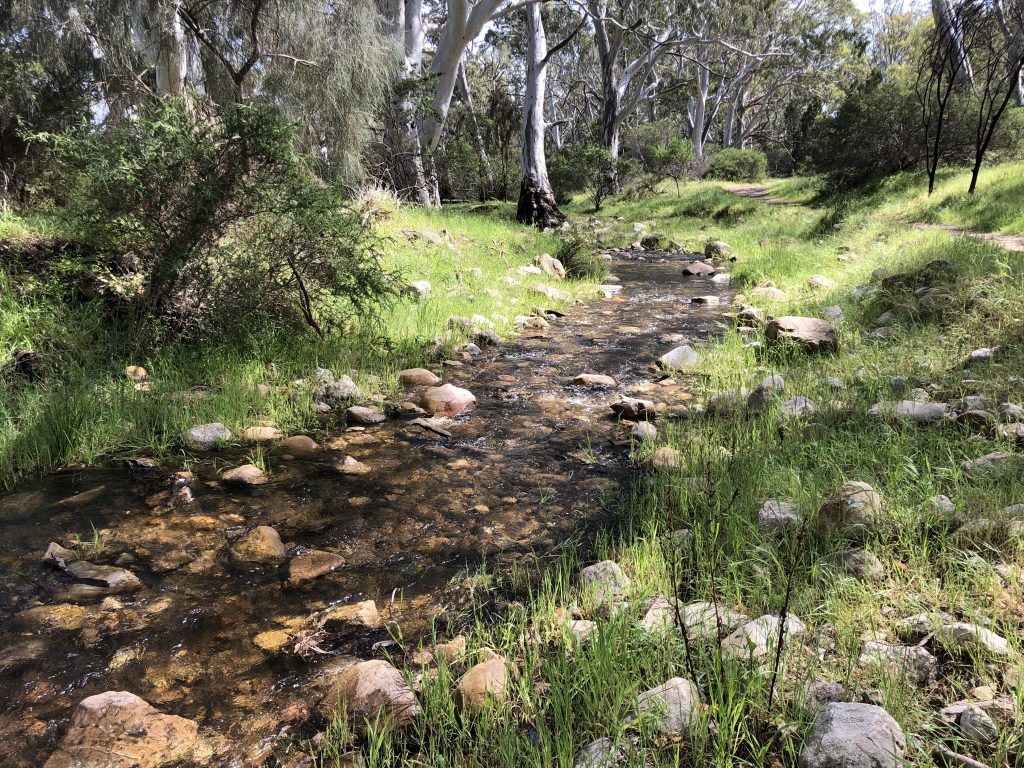
Over the three days we did daytime transect walks, nocturnal spotlighting transect walks, point counts, UV light trapping, roofing tile grid checks, active searching and listening. These surveys add on those undertaken at the same location in August. The summary below shows the progressive increase in numbers of each faunal group from August to September/October.
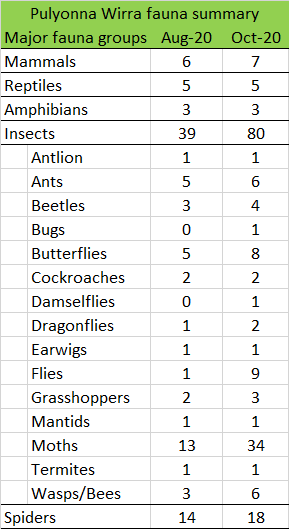
The five roofing tile grids were checked for reptiles and we found three species although none were new to the survey. Daytime roofing tile checks revealed not just reptiles; we also recorded frogs, beetles, spiders, other arthropods and ants. There was a great variety of ants under the tiles – which local expert John Weyland (from UniSA) joined us on. Some species have certainly set up home with very intricate tunnels and egg laying areas created under a protective (albeit sometimes moveable) roof (our survey tiles). We look forward to hearing back from John on the identifications of ants found so far to incorporate into our final list.
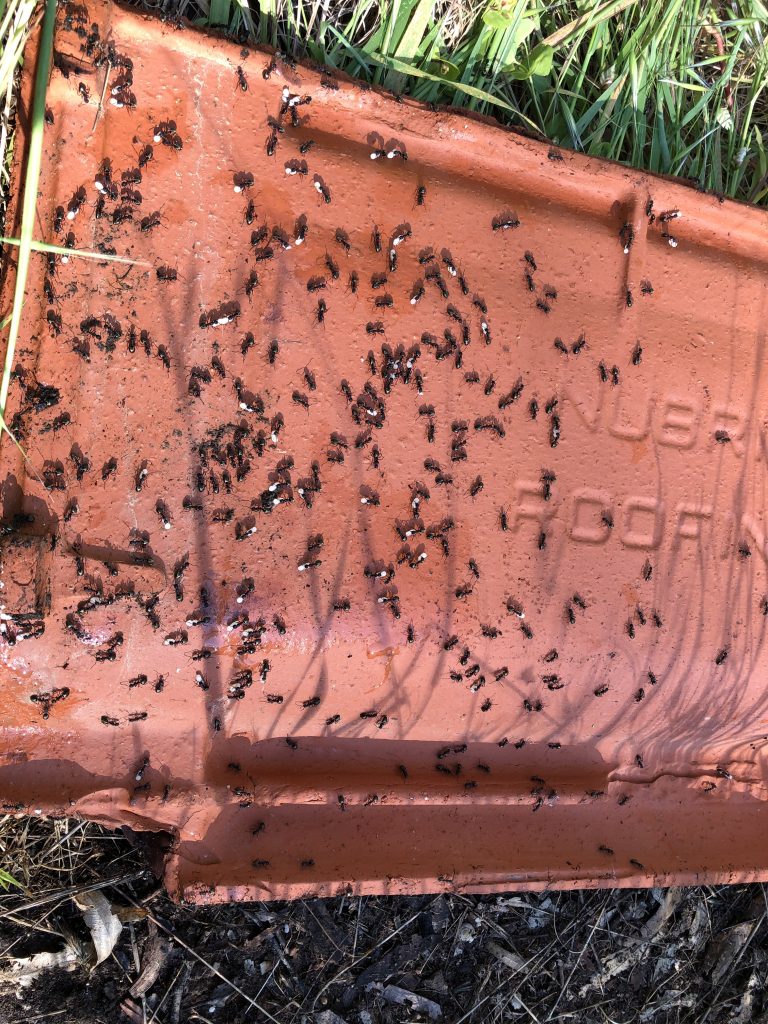
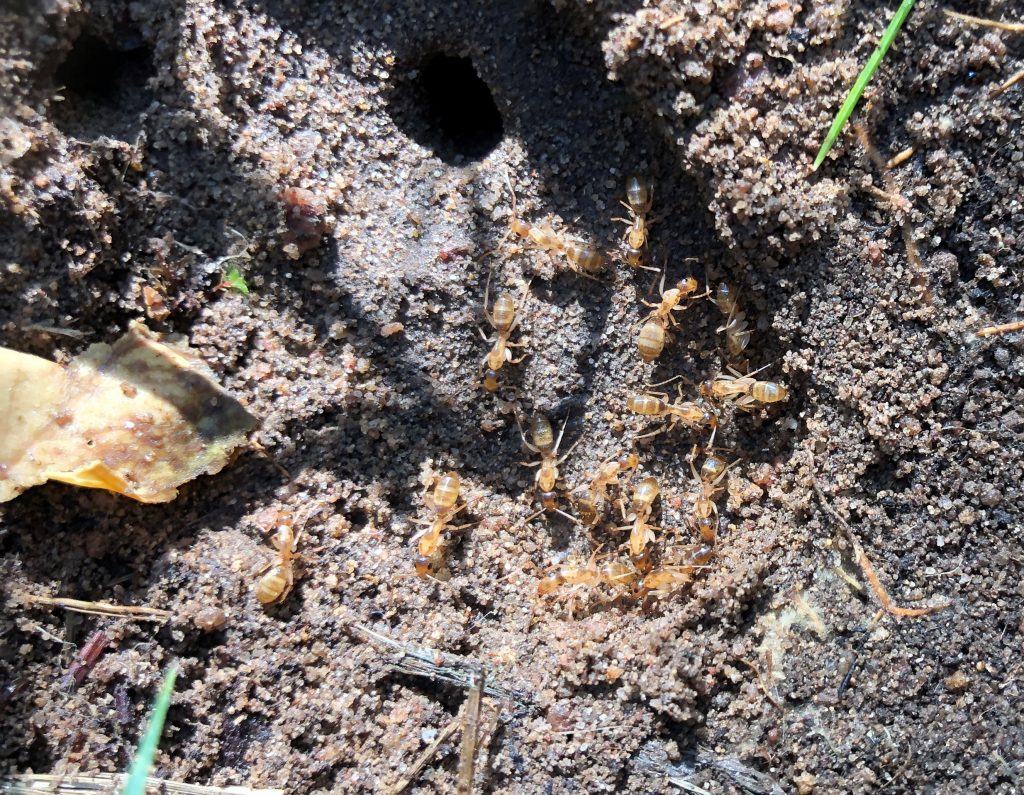
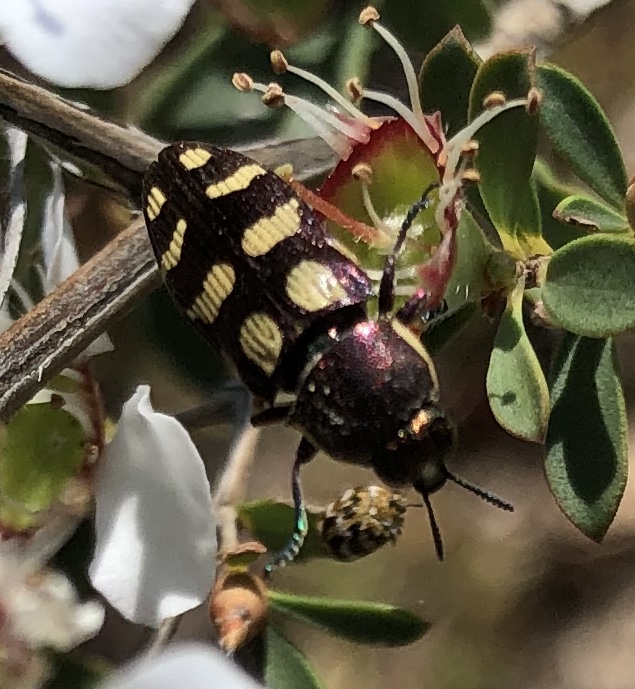
We undertook transect walks to see what flying insects were around, with encouraging results early in spring. Several new butterfly species were seen including the Southern Grass-dart, and the migratory Caper White. Also a host of day flying moths, wasps, bees and flies. We also checked flowering plants for beetles. Two highlights were seeing jewel beetles on the flowering Leptospermum and two varieties of Bee Fly. If you wish to attract beetles like these into your gardens, plant native plant species in the Myrtaceae family – including Leptospermum, Calytrix or Melaleuca.
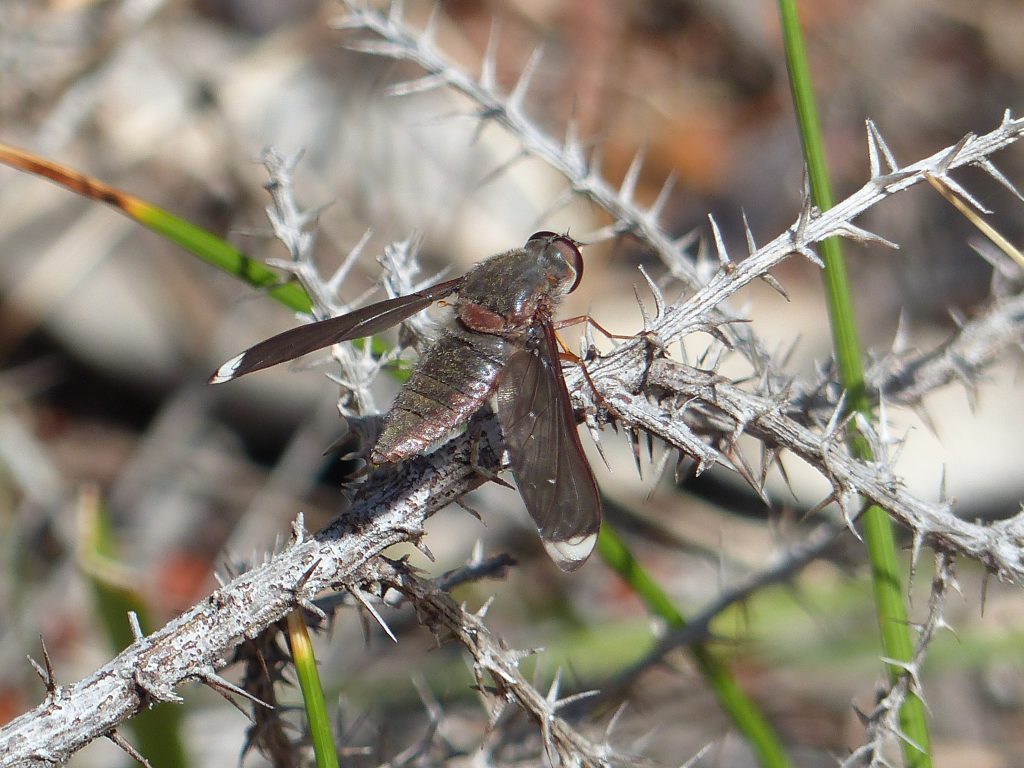
After dark we walked transects while spotlighting, listening and watching out for arboreal mammals up in the canopy of the River Red, Blue and Hill Gums. We stopped at different points in the park to listen quietly for sounds and for some attendees to learn various new sounds of other nocturnal animals possibly found in the park. These were played through a smartphone and speaker and it was very effective in highlighting the amazing sounds in the bush after dark. Although the group had an insightful and enjoyable walk we were unable to add any new species to the survey.
During the spotlighting night we were fortunate to have a local spider expert David Hirst come along. David pointed out species of interest and answered questions about the spiders we saw on the ground, under bark or in their intricate webs. David detailed at one stop how orb-weavers consume their web (silk) after each night and recreate it again the next suitable night. An amazing and natural process especially for the younger spiders as they find their territories. There was a great variety of spiders seen during the walk and we look forward to incorporating David’s identifications into our final list for the reserve.
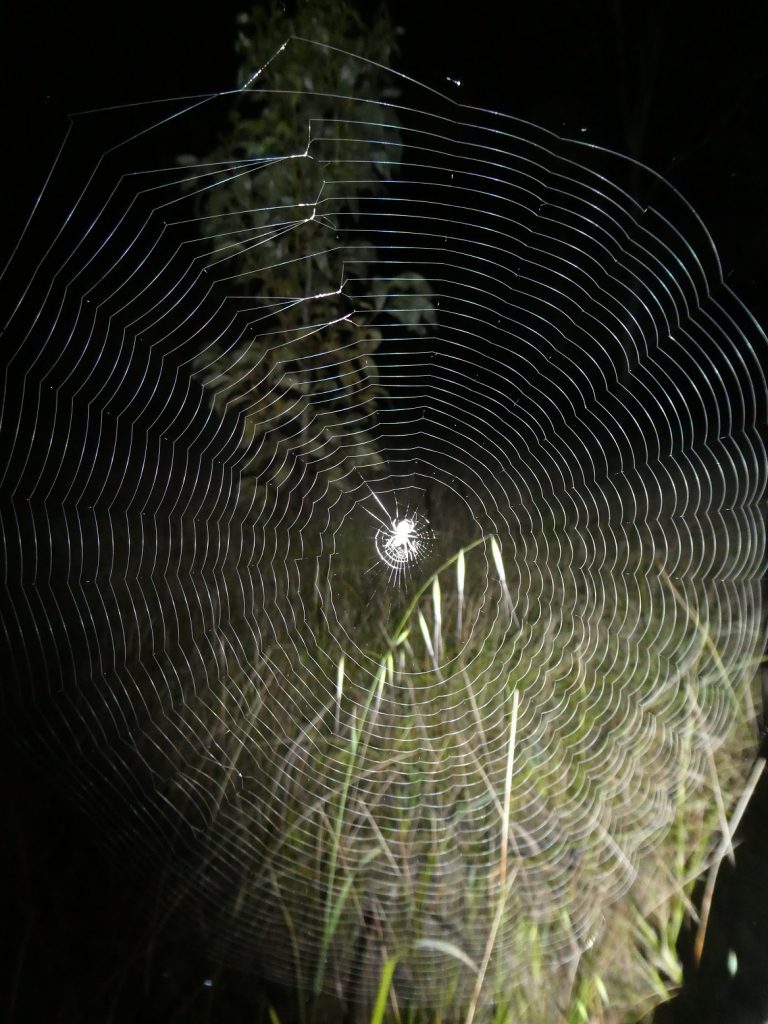
The Fifth Creek was flowing really nicely and had two species of frog calling, the Eastern Banjo Frog and Common Froglet. During warm and sunny conditions, I was pleased to hear a cicada calling from low in the Blue Gum woodland adjacent Fifth Creek. This cicada was not familiar to me; however, it sounded like a species from the Heathland Buzzer group. Have a listen to this recording and tell me if you’ve heard it before. I would be very keen to receive any recordings of unknown sounds during sunny days over the next few months.
A huge thank you to John Weyland and David Hirst for their on site expertise during this recent trip and their continued voluntary support for this project. Thank you to Greg Coote for your photos from our night walk, to Andy Lines (from NGT) for assistance with identifying moths and Nicole Mojonnier (also from NGT) for the day and night time field assistance.
One final trip in late Nov-early Dec is planned to pick up more cicadas, more creek dwelling creatures, more moths and light attracted insects and hopefully reptiles beneath the roofing tiles too.
Funding support has come through the Campbelltown Landcare Group for this project; we thank Marc, Colin and crew for their support.
Please browse through the list below by clicking on the page button in the bottom left corner
Fauna.list_Oct2020-1